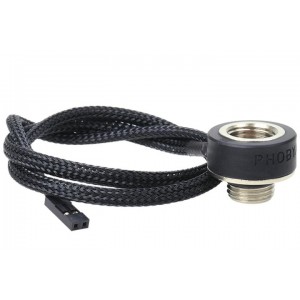The whirring up/down of my fans based on CPU temps has been bugging me, and I'd like to switch to using water temperature to control fan speed. I'm looking at G1/4 fittings, either in-line in the loop, or swapping one of my stop fittings for one with a temp sensor. My questions are:
1) Where in the loop are these sensors ideally placed? Just to keep things simple and if it's all the same, I'd like to put the stop fitting in my reservoir.
2) Is an in-line sensor 'better' than one integrated into a stop fitting, or vice-versa, or does it not matter?
Examples:
In-line:

Stop:

Thanks.
1) Where in the loop are these sensors ideally placed? Just to keep things simple and if it's all the same, I'd like to put the stop fitting in my reservoir.
2) Is an in-line sensor 'better' than one integrated into a stop fitting, or vice-versa, or does it not matter?
Examples:
In-line:

Stop:

Thanks.
![[H]ard|Forum](/styles/hardforum/xenforo/logo_dark.png)




